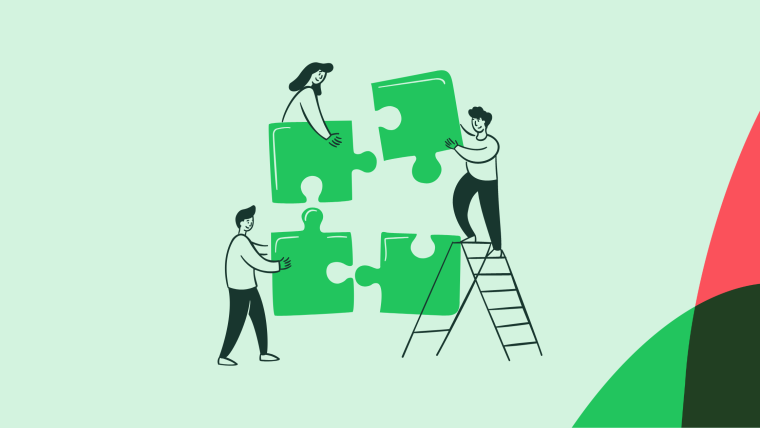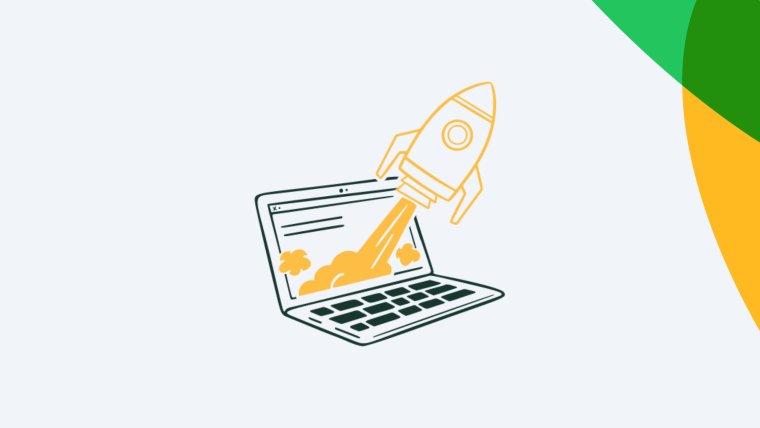Digital Adoption Platforms (DAPs) are a big deal for teams looking to improve user experiences, drive product adoption, and scale efficiently (wait... isn't that everyone?!). But it can feel overwhelming with so many different things to consider, from use cases to evaluating tools. No stress, this easy-to-digest guide breaks it all down for you.
NB: This is a condensed version of our long read on buying a DAP. If you prefer to go deeper on this topic, here it is for you.
What is a Digital Adoption Platform?
A Digital Adoption Platform (DAP) is a no-code tool that helps companies create in-app experiences, usually product tours, tooltips, banners, and surveys, to guide and engage users without needing constant engineering support.
After a simple one-time setup, teams can design and deploy personalized experiences to specific user segments, analyze their impact, and make adjustments in real time. DAPs empower teams like Product, Marketing, and Customer Success to improve user onboarding, feature adoption, and overall engagement.
Why are DAPs so popular all of a sudden?
Several market shifts are fueling the rise of DAPs:
Product-Led Growth (PLG): Companies are focusing on self-serve models to scale efficiently. DAPs enable faster experimentation with in-app messaging and UX improvements.
Consumerization of software: Users now expect B2B tools to match the ease of use of consumer apps. Personalized, self-serve onboarding is no longer optional.
No-code/low-code trends: With limited engineering resources, teams are turning to tools like DAPs that empower non-technical users to create and manage in-app experiences.
Usage-based pricing models: SaaS companies increasingly rely on feature adoption and usage metrics for revenue growth. DAPs help drive these behaviors.
The top 10 use cases for DAPs
User onboarding and activation: Streamline the learning curve with guided tours and checklists.
Trial conversion: Highlight key features during free trials to boost paid conversions.
Feature discovery: Nudge users toward underutilized or new features.
Self-serve support: Reduce support tickets by embedding help resources directly in your app.
Churn reduction: Re-engage users with personalized tips or reminders.
Cross-sell/upsell opportunities: Promote premium features or plans at the right moments.
Feedback collection: Use in-app surveys to gather insights from active users.
Content promotion: Share relevant guides, webinars, or updates directly within the product.
Change management: Smooth over redesigns or major updates with walkthroughs and announcements.
Compliance training: Ensure users complete the necessary steps for regulatory requirements.
When should you invest in a DAP?
Consider investing in a DAP if:
You’re launching a self-service model or product-led growth initiative.
Your product is undergoing significant changes (e.g., redesigns, new features).
You’re struggling with user adoption or engagement metrics.
You need scalable solutions for onboarding or support without adding headcount.
Ultimately, if your business is focused on improving user experience, reducing support costs, and driving efficiency in onboarding or feature adoption, it’s likely time to consider investing in a DAP.
DAP uses by company stage
Startups (Pre-PMF): Focus on gathering feedback via surveys and guiding early adopters with lightweight onboarding flows.
Growth Stage: Use DAPs for activation, feature adoption, and scaling support as your user base diversifies.
Mature Companies: Optimize efficiency by reducing churn, driving upsells, and enabling self-service support at scale.
When is a DAP not relevant?
A DAP might not be necessary if:
Your product lacks a user interface (e.g., APIs).
Your platform isn’t web-based (e.g., hardware or native-only mobile apps).
Product engagement isn’t critical to your business model (e.g., infrastructure tools like AWS).
Should you build or buy a DAP?
When deciding whether to build a solution in-house or buy a third-party Digital Adoption Platform (DAP), the choice ultimately depends on your business needs, resources, and long-term goals. Here’s a high-level breakdown of key considerations for each approach:
You might consider building if:
You have specialized workflows that off-the-shelf tools can’t support.
Your engineering team has the bandwidth and expertise to create and maintain a custom solution.
You’re operating at a scale where managing systems in-house (e.g., Facebook, Netflix) is more cost-effective.
Technical limitations prevent you from leveraging existing DAPs (e.g., hardware-based platforms).
You should consider buying if:
You need to launch quickly and lack the engineering resources for an in-house build.
Experimentation and iteration are priorities, and you want access to features like A/B testing, analytics, and segmentation out of the box.
The cost of building and maintaining a custom solution outweighs the cost of purchasing a proven platform.
Your focus is on solving user adoption challenges efficiently rather than reinventing the wheel.
Ultimately, the decision comes down to ROI. Building offers complete control but requires significant upfront investment and ongoing maintenance. Buying provides faster deployment and advanced features but may come with vendor dependency.
Creating a DAP business case
Identify the problem: Clearly outline the challenges your team faces, such as low user adoption, high support costs, or a high drop-off in onboarding. Highlight how these issues impact real metrics like churn and activation.
Define goals and scope: Specify what you want to achieve with a DAP, whether it’s reducing support tickets, increasing feature adoption, or improving onboarding.
Forecast ROI: Build an ROI model by estimating the potential improvements a DAP can deliver and translating these into financial impacts.
Evaluate build vs. buy: Weigh the costs and benefits of building an in-house solution versus purchasing a DAP. Consider factors like time-to-value, ongoing maintenance, and scalability.
Assess tools: Research potential DAPs and evaluate how their features to match your needs. Focus on must-haves like analytics, audience targeting, and integrations while also considering pricing and support.
Create a rollout plan: Outline how your DAP will be implemented across teams, including timelines, training plans, and integration strategies. Address potential risks and mitigation steps.
Present data-driven evidence: Use case studies, metrics, or testimonials from similar organizations to demonstrate the value of a DAP. For example, highlight how other companies achieved faster user adoption or reduced costs with a DAP too.
➡️ We have a ton more to say on this one, here's the guide on building a DAP business case.
The top 10 Digital Adoption Platforms
Chameleon
Pendo
Appcues
WalkMe
Whatfix
Userflow
Userpilot
Gainsight PX
CommandAI
Intercom (Product Tours)
Each has unique strengths, so choose a handful to evaluate based on your needs (e.g., analytics depth or ease of use).
DAP uses by function
Product teams: Drive feature adoption and improve activation rates.
Customer Success teams: Reduce churn and enable scalable support with self-service tools.
Marketing teams: Promote content and gather user feedback for campaigns.
Key features of a Digital Adoption Platform
When evaluating DAPs, look for:
Audience targeting and segmentation
Multiple experience types (e.g., tooltips, tours)
Analytics and A/B testing capabilities
Customization options to match your brand
Integrations with your tech stack
On integrations, that can make or break if a DAP is going to work for you. Make sure that you can:
Sync user data from your CDP (e.g., Segment) for better targeting.
Export analytics to BI tools like Amplitude or Tableau for deeper insights.
Connect with CRMs (e.g., Salesforce) or help desks (e.g., Zendesk) for seamless workflows.
How to run a great DAP evaluation
Preparing for the tooling evaluation
Form an evaluation committee with engineering, design, security, and leadership team stakeholders.
Draft an evaluation matrix outlining must-have features and priorities.
Set a clear timeline, evaluations typically take 3-4 months for sales-assisted processes.
Share your goals with the sales team upfront, this helps sales reps tailor demos and proposals.
Use account executives as resources; they can connect you with product experts or case studies.
Running a successful trial or POC
Focus on usability, can you easily create the experiences you need?
Test key features like audience targeting and analytics reporting.
Involve engineers early to ensure smooth implementation.
Work through a list of things you'd like to test
Procurement, pricing, and contracting
Pricing varies widely among vendors, expect quotes based on MAUs (Monthly Active Users). Negotiate terms like:
Discounts for annual payments
Add-ons like SSO or premium support
Flexibility in scaling costs as your user base grows
Get access to our DAP Evaluation folder
Download your evaluation matrix, example contracts, timelines and more





